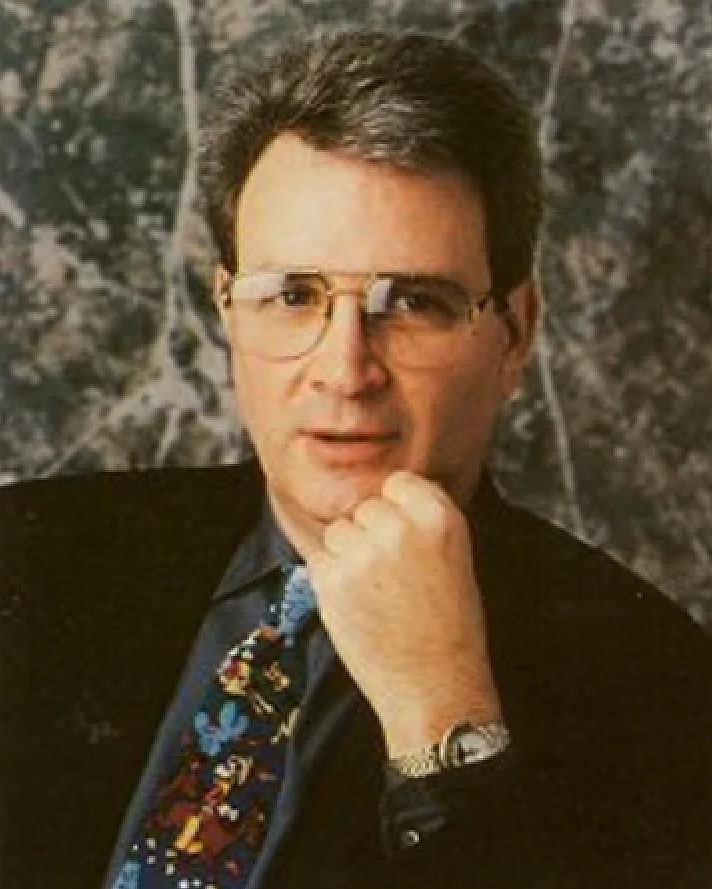The Making of Blood and Fire

For all of Star Trek’s progressivism — Japanese and Russian bridge officers two decades after World War II and in the middle of the Cold War, one of the first interracial kisses on television, women in positions of authority — the franchise didn’t get around to featuring an openly gay character until 2016.
It wasn’t for lack of trying. During the first season of The Next Generation, Gene Roddenberry promised fans there would be gay and lesbian characters on the show. David Gerrold, who had written several episodes of The Original Series as well as The Animated Series, pitched a script that featured a gay couple and an AIDS allegory: “Blood and Fire”.
It was never filmed.
Fear of AIDS
Gerrold told Trekmovie in 2014 that his inspiration was the AIDS epidemic of the 1980s. Ignorance and homophobia had caused people to stop donating blood. He wanted to put the Enterprise crew in a similar situation and show that they would not be afraid.
So the story wasn’t about AIDS as much as it was about the fear of AIDS.
Gerrold told Cinefantastique in 1992 that he also considered the story a tribute to Mike Minor, who had worked as a concept artist and art director on The Original Series, the aborted second Star Trek television series Phase II and the first two motion pictures. Minor had died of AIDS in 1987.
James Van Hise included a lengthy story treatment in his Trek: The Unauthorized Behind-the-Scenes Story of The Next Generation. Gerrold told Trekmovie the episode went through several rewrites. What follows is a summary of his original idea.
The story
The episode starts with the Enterprise responding to a distress call from the research vessel Copernicus. An away team beams over, consisting of Riker, Georgi, Yar and three male characters, named Freeman, Eakins and Hodel. They encounter a mysterious sparkling cloud.
As Eakins and Hodel try to reactive the computer, Hodel inquires about Eakins’ relationship with Freeman, who reveals they have been a couple since Starfleet Academy. This would have been the only mention of their same-sex relationship, the thinking being that in the twenty-fourth century, homosexuality would no longer be an issue.
The away team finds one survivor, who hysterically kills himself before he can reveal what happened to the ship. As he disintegrates, more of the particles appear.
Data, monitoring the situation from the Enterprise, reports that the particles are in fact plasmasites, better known as Regulan bloodworms. This is such a vile incurable disease that Starfleet forbids any rescue attempt of anyone infected by it.
Hodel is attacked by the worms and Eakins must decide to kill the man in order to end his suffering. The rest of the away team are beamed into the Copernicus cargo bay, and quarantined inside a slowly weakening force field, where they find more survivors, including one Yarell, who claims to be leading a Federation-sanctioned investigation into the bloodworms.
Beverly beams over to the Copernicus despite Picard’s objections. Some aboard the Enterprise fear that the contagion will spread to their ship, a sentiment quickly put in its place by the captain: “We’re not throwing away half the human race because the other half is scared.” Crusher proposes to perform a complete blood transfusion on everyone infected with the virus. Because there isn’t enough artificial blood, a blood drive is organized.
As the transfusions proceed, and the Copernicus survivors are beamed over to the Enterprise, Picard starts to suspect that the bloodworm research might be used for military purposes. Before Riker, Eakins and Freeman can beam out, the force field collapses. Freeman tells the other two men to go. Infected, Freeman kills himself with a phaser.
Picard considers destroying the Copernicus, but that could release the bloodworms into space. It is then discovered that the Copernicus was on course to Ferengi territory. Yarell, who had planned to destroy the Ferengi with the virus, pulls out a vial of bloodworms and threatens to release it if Picard interferes. Eakins pulls a phaser on Yarell. Yarell’s subordinate grabs the vial and swallows the bloodworms. He then takes an experimental cure devised by Dr Crusher and is beamed back to the Copernicus, where Crusher’s theory is proven correct and the bloodworms metamorphose into a beautiful, non-lethal lifeform, with the subordinate sacrificing his life in the process.
If not now, when?
According to Gerrold, half the staff thought it was a “hell of a script” and other half was skeptical.
“People complained the script had blatant homosexual characters,” he told Cinefantastique.
Rick Berman said we can’t do this in an afternoon market in some places. We’ll have parents writing letters.
Gerrold remembered Dorothy Fontana, Bob Justman, Bob Lewin and Herb Wright being among this supporters.
He wrote a memo, reminding the staff of Roddenberry’s promise to have gay characters on the show:
If not here, where? If not now, when?
But, according to Gerrold, it was Roddenberry himself who backed out.
Disillusioned, Gerrold left the show. It wasn’t until the fourth season’s “The Host” that sexual preference was raised. In the episode, Dr Crusher falls in love with the male host of a Trill symbiont. When the man is killed, and the symbiont transferred to a woman, she feels she can’t continue the relationship.
Season 5’s “The Outcast”, in which Riker falls in love with the member of an androgynous species, who is sentenced to psychotherapy for choosing to be female, dealt with the issue of intolerance more explicitly, but The Next Generation never revealed a single non-heterosexual member of the Enterprise’s supposedly 1,000-strong crew.
The story has a happy ending for Gerrold. With his input and permission, Carlos Pedraza rewrote “Blood and Fire” into a two-part episode for the fan-made Star Trek series New Voyages in 2012.
Gerrold’s screenplay


2 comments
Submit comments by email.